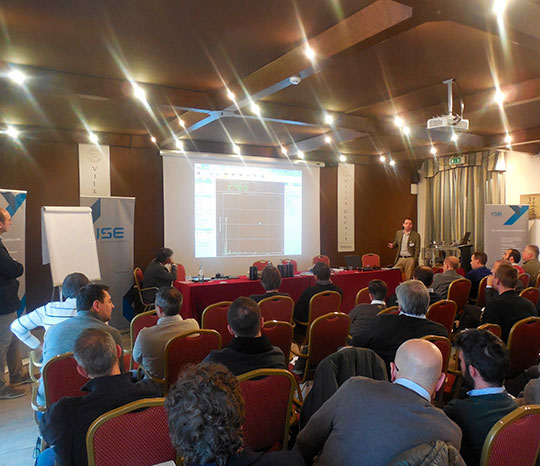Pdm & Condition Monitoring training

In order to effectively implement Predictive Maintenance and Condition Monitoring and guarantee the company organization concrete advantages in the way of doing maintenance, training must aim at a measurable growth of the company’s internal know-how, characterized by solid methodologies and tools, combined with more effective best practices, which our trainers develop and refine through continuous experience in the field.
The experience of ISE experts is recognized and certified:
- CICPND certification
- Vibration analysis – Cat. III – Vibration Institute, American National Standard (ANSI)
- PES-PAV certification, to operate in the electrical sector
- PdMA Usa Certification, for Electrical Measurements
- ITC Level II and ISO 9712 / EN473 IT, for Thermography
- SDTs Level 2 Airborne and Structure Borne Ultrasound, for Ultrasound Analysis
- CND II Level UNI EN ISO 9712 certification for VT, UT, MT, TT, PT methods
ISE is a partner of the Training School of the Vibration Institute.
Methods and tools to capture the weak signs of the proximity of damage to critical components, carrying out maintenance only when needed and preventing downtime.
Techniques and tools to prevent misalignment or premature failure of joints and bearings, avoiding irreparable damage.
Techniques and tools to correct the static and dynamic imbalances of the rotating parts, to avoid serious damage inside the system.
Techniques and tools to measure and analyze abnormal vibrations and monitor them periodically, in order to predict the probable period of failure.
Knowing how to use techniques and tools for vibrational analysis and preparing for the certification exam of the Level I Vibration Institute.
Deepen your knowledge and complete your experience on vibration measurements and prepare for the certification exam of the Level II Vibration Institute.
Use of techniques and tools for the analysis and thermographic measurement of thermal anomalies and overheating of systems and components.
Managing a correct lubrication plan through knowledge of the chemical characteristics of lubricants and their preventive and maintenance potential.
Knowing how to measure and analyze the performance and efficiency data of motors that work in alternating and direct current, in order to be able to detect any operating anomalies.
Knowing how to analyze and monitor, through the use of ultrasound, those operations which anomalous sound level conditions may indicate the onset of a fault.


